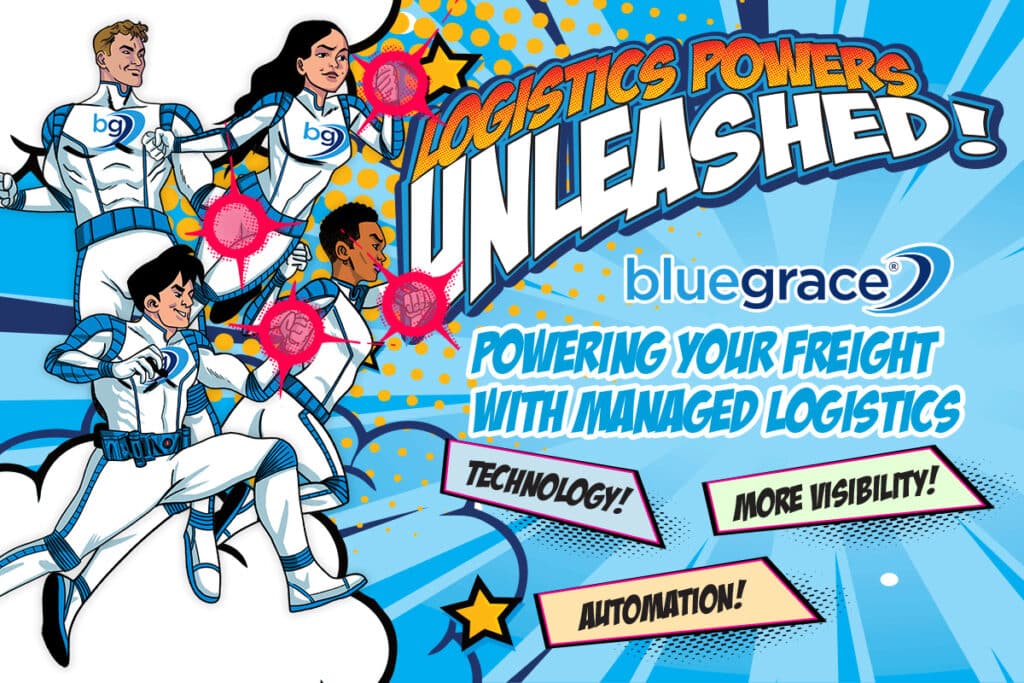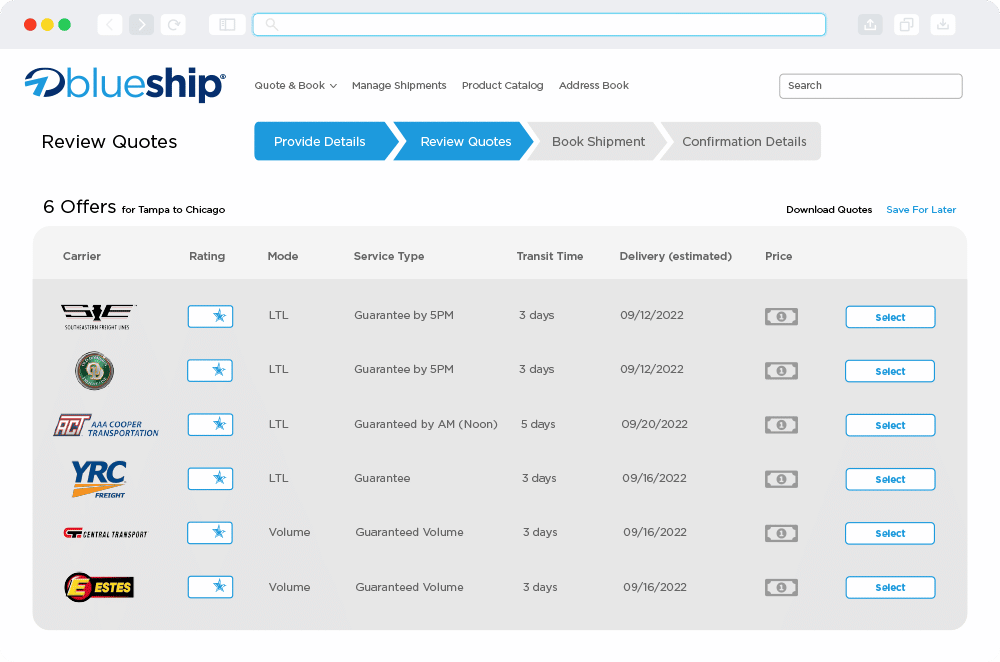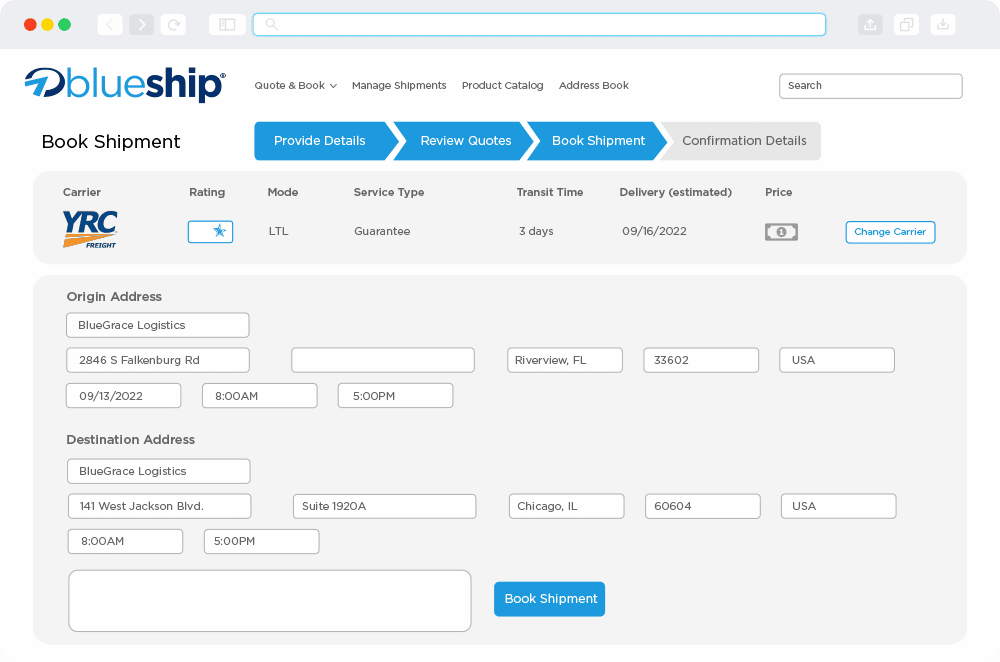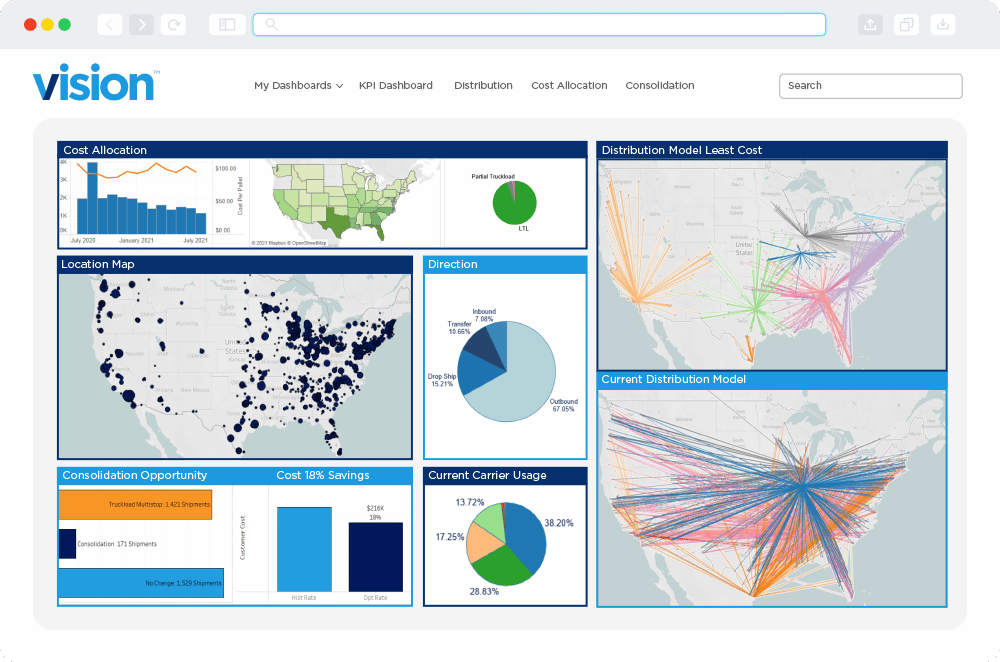
What Is a Drop Trailer Program and Is It Right for My Business?
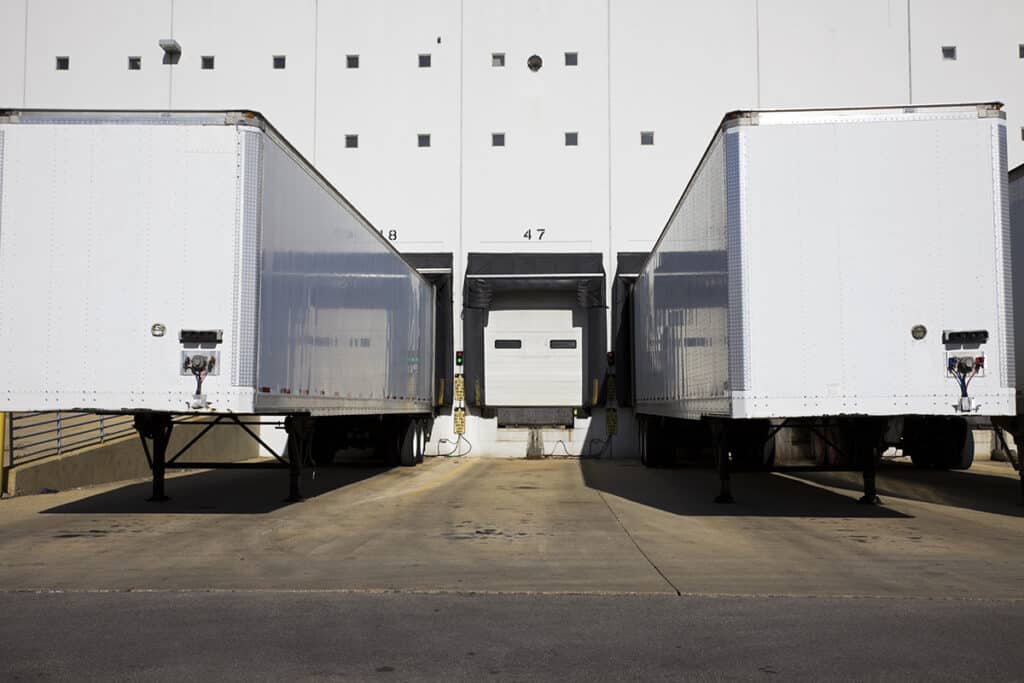
A drop trailer program, at first glance, might appear to be just another component of the supply chain puzzle. However, its ability to optimize freight shipping operations in today’s fast-paced and interconnected business landscape is nothing short of transformative.
Moving goods from point A to point B seamlessly has become a defining factor in maintaining a competitive edge and meeting customer demands. Innovative strategies like drop trailers can reshape how companies manage their transportation and supply chain functions.
Whether you’re a small-scale enterprise or an industry giant, understanding the dynamics of drop trailer programs can help your business achieve a smoother, more streamlined logistical operation.
This post will guide you through the mechanics, benefits, and potential impact of drop trailer services on your business’s logistics efficiency. Also, we’ll explore how this innovative approach can reduce wait times, increase dock productivity, and enhance shipment management flexibility.
Get Started with a Drop Trailer Program
What is a Drop Trailer?
A drop trailer, often referred to as a “drop load”, is a container or trailer loaded with goods at the shipper’s facility. It is then transported to the receiver’s location and left by the driver (or “dropped”) at the shipper’s facility for loading/unloading at the receiver’s convenience. Importantly, the drop trailer can be retrieved by either the original driver or another driver at a later, predetermined time.
The advantages are clear: drop trailers offer improved efficiency and time management. Without such a program, carriers would need to arrive at the receiving dock within a specific appointment window. However, this task is challenging given tight delivery schedules and regulatory constraints like mandatory rest breaks.
Additionally, the truckload of goods can be removed from the detached trailer on the receiver’s schedule, instead of adhering to immediate unloading upon arrival. This flexibility helps streamline dock operations and reduce lengthy waiting periods loading/unloading that often cause drivers to lose valuable driving hours.
What is a Drop Trailer Program?
A drop trailer program takes the fundamental concept of drop trailers and elevates it into a comprehensive strategy. By strategically positioning preloaded trailers, this program optimizes routes, minimizes downtime, and caters to the unique requirements of a diverse supply chain.
As consumers demand faster shipping times, drop trailer programs have become an attractive solution for businesses looking to stay competitive. These tailored solutions can streamline operations, cut costs, and enhance overall customer satisfaction.
Key Terminology to Look for in Drop Trailer Programs
Navigating drop trailer programs can sometimes feel like deciphering a new language. With various terms and concepts specific to this strategy, understanding the terminology is important for making informed decisions. Let’s dive into some key phrases that you should keep an eye out for when exploring drop trailer programs.
Trailer Pools (or Drop Pools)
Whether referred to as trailer pools or drop pools, this term relates to networks of preloaded trailers strategically stationed at different locations. These drop trailers are readily available for carriers to use, offering flexibility and reducing wait times during loading and unloading processes.
Drop-and-Hook
A fundamental and increasingly popular practice within drop trailer programs, drop-and-hook refers to a driver dropping off a loaded trailer at a facility and hooking up to an already preloaded trailer. This swift exchange minimizes dwell time and optimizes driver productivity.
Trailer Leasing
This concept involves renting trailers from a third-party provider. In the context of drop trailer programs, businesses can lease preloaded trailers, avoiding the hassle of loading and unloading at their facilities. This option is particularly beneficial for companies looking to enhance drop load efficiency without significantly investing in trailer ownership.
Benefits of a Drop Trailer Program
Innovations in logistics often lead to a cascade of advantages reverberating throughout the supply chain. A drop trailer program is no exception; it has the potential to transform how businesses manage their transportation and distribution processes.
More than just an operational shift, a drop trailer program is a strategic transformation that yields tangible benefits across various aspects of logistics, such as:
1. Enhanced Operational Efficiency
A drop trailer program introduces a level of predictability that streamlines operations. By preloading trailers at the shipper’s facility, companies eliminate the need for real-time loading and unloading. This proactive approach minimizes disruptions, accelerates the flow, and reduces the risk of delays that often accompany traditional loading practices.
2. Reduced Waiting Times and Improved Scheduling
Traditional methods often entail long waiting times for both carriers and receivers. With drop trailer programs, carriers can execute drop-and-hook operations, substantially minimizing waiting times. Additionally, receivers can efficiently plan their unloading processes within a scheduled window, optimizing labor allocation and eliminating bottlenecks.
3. Increased Dock and Labor Utilization
Drop trailer programs contribute to increased dock and labor utilization by separating loading and unloading processes from transportation schedules. Facilities can better manage their resources, as trailers are loaded/unloaded based on demand, preventing idle time and enhancing overall productivity.
4. Potential Cost Savings Through Optimized Logistics
Drop trailer programs can lead to significant cost savings. Reduced dwell times translate to better asset utilization and more efficient use of driver hours. Streamlined operations, coupled with minimized waiting times, can result in fewer penalties for delays and better allocation of labor resources. Moreover, optimized routing and reduced fuel consumption contribute to cost savings and sustainability.
5. Improved Partner Relationships
Collaboration between shippers, carriers, and receivers is pivotal for supply chain success. Drop trailer programs foster stronger partnerships by offering predictability and reliability. Carriers appreciate streamlined processes, while receivers benefit from efficient unloading practices, enhancing relationships and encouraging better communication within the network.
Is a Drop Trailer Program Right for You?
As the logistics landscape evolves, businesses must continually assess and adapt their strategies to remain competitive and efficient. Implementing a drop trailer program presents an intriguing opportunity, but is it the right fit for your specific circumstances?
Answering the following questions can help your business make an informed decision.
What is the volume and frequency of your shipments?
Drop trailer programs are particularly advantageous for businesses with steady shipments and full truckload freight. If you deal with a consistent flow of goods that require transport in trailer, as opposed to a flatbed truck, a drop trailer program can help you optimize loading and unloading processes.
What is the availability of suitable docking facilities?
Evaluate the docking facilities at both your own location and your receiving partners’ facilities. Drop trailer programs require suitable infrastructure to accommodate preloaded trailers. If your facilities lack adequate docking space, it could hinder the program’s effectiveness.
Does your business require flexibility with scheduling and operations?
If your business operates in an environment that relies on flexibility, a drop trailer program can provide the agility you need. This approach allows for more flexible scheduling, as goods can be loaded and unloaded according to the receiver’s convenience, reducing the pressure of strict delivery windows.
What are the potential benefits and efficiency improvements a drop trailer program can bring to your operations?
Consider reduced waiting times, enhanced dock utilization, and potential cost savings. If your business stands to gain from streamlined processes, improved resource allocation, and increased operational efficiency, a drop trailer program could be a compelling option.
Implementing a Drop Trailer Program for Your Business
With careful planning and a strategic approach through the following steps, your business can ensure a seamless integration:
- Perform an Infrastructure Evaluation: Ensure they can accommodate preloaded trailers. If modifications or expansions are required, plan them in advance to avoid disruptions during program rollout.
- Incorporate Technology Solutions: Utilize technology solutions, like a Transportation Management System (TMS), that facilitate smooth communication and real-time tracking of preloaded trailer movements. A TMS can streamline carrier assignments, help manage trailer pools, and seamlessly integrate with existing systems for enhanced visibility.
- Educate Your Team: Provide comprehensive training to your team on the new drop trailer program. Include education on new technologies, protocols, and changes in operational workflows.
- Establish Clear Protocols and Guidelines: Define protocols like standard operating procedures (SOPs) for loading, unloading, and trailer exchange processes. As a result, this can ensure consistency and help all parties involved understand their roles and responsibilities.
- Collaborate with Carriers: Work closely with carriers to align expectations, discuss operational protocols, and ensure they are on board with the drop trailer program’s objectives.
- Engage with Receiving Partners: Collaborate with receiving partners to define unloading windows, ensure space availability, and align on protocols.
- Consider a Pilot Phase: Think about implementing the drop trailer program in a pilot phase with a select group of carriers or lanes. This allows you to fine-tune processes, identify challenges, and make necessary adjustments before full-scale implementation.
- Regularly Assess Performance: Continually review program success by analyzing data from tracking mechanisms and gathering feedback from carriers, receivers, and your internal team. Use this feedback to improve processes and address any issues that arise continuously.
Partnering for Success in Drop Trailer Programs
A drop trailer program isn’t a one-size-fits-all solution but a strategic approach that can substantially benefit your logistics operations. Remember that successful implementation hinges on collaboration with carriers, receivers, and your internal team.
Why Partner with BlueGrace?
When it comes to your drop trailer program, partnering with BlueGrace offers access to an extensive network, providing added capacity and competitive pricing that you might not discover elsewhere. Our specialized expertise in drop trailer services ensures efficient management, cost savings, and logistical efficiency.
We bring flexibility and scalability to your logistics operations, adapting to your evolving needs, allowing you to focus on your core business while we handle the complexities of program management. Revolutionize your logistics with BlueGrace – get a fast, free freight quote today and elevate your drop trailer program to new heights.
Recent Posts
BlueGrace Logistics Promotes Carly Bly to Vice President of LTL Pricing and Carrier Relations
BlueGrace Logistics Promotes Carly Bly to Vice President of LTL Pricing and Carrier Relations
Read Newsroom
Delivering Excellence: Innovations and Strategies in Food and Beverage Logistics
Delivering Excellence: Innovations and Strategies in Food and Beverage Logistics
View Whitepaper
Adapting to Retail Demand Fluctuations: Solutions for Food and Beverage Shippers
Adapting to Retail Demand Fluctuations: Solutions for Food and Beverage Shippers
Read The Logistics Blog®
